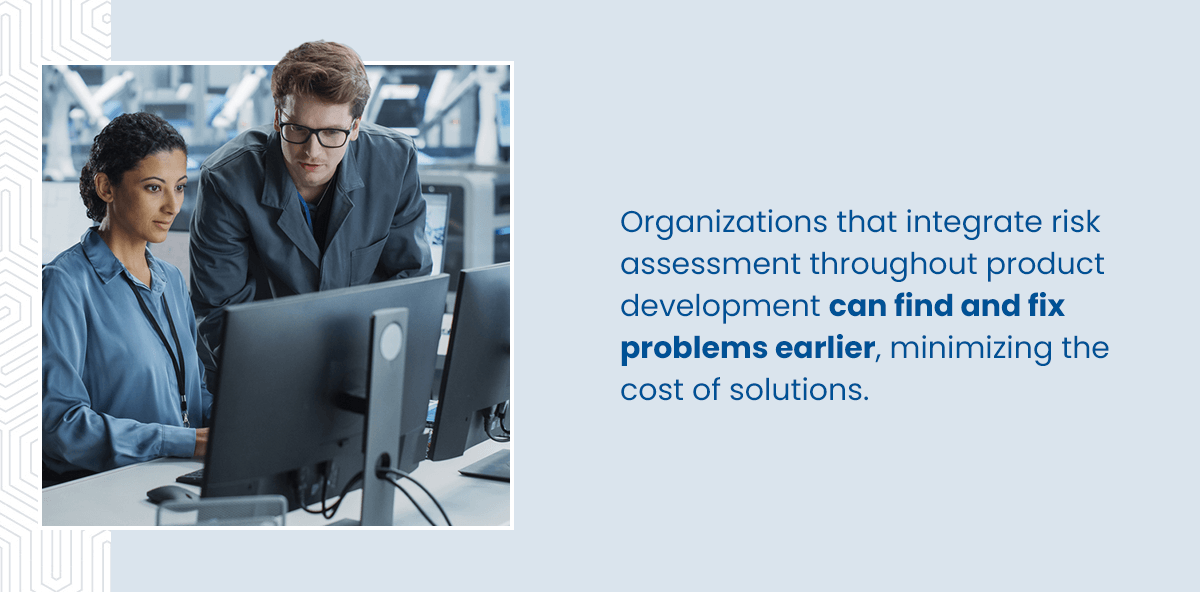
The aerospace industry targets a zero defect quality policy. With increasingly complex supply chains and stringent regulatory requirements, organizations must implement robust systems that ensure product conformance from concept through production.
AS9145 provides the structured framework which aerospace organizations utilize to meet these challenges through part production approval processes (PPAP). For organizations already operating under AS9100 certification, AS9145 represents the next development in aerospace quality implementation. This standard establishes requirements for performing and documenting Advanced Part Qualification Process (APQP) and production part approval process (PPAP), creating a comprehensive approach that extends from initial concept through post-delivery service.
AS9145 Requirements and Their Impact
AS9145 integrates with existing aerospace standards such as AS9100, AS9102, AS9103 and AS9110, creating a unified quality management approach. Released in 2016 by the International Aerospace Quality Group, this standard establishes specific requirements for APQP and PPAP documentation that complement existing quality management systems (QMS).
The standard defines five distinct APQP phases:
- Planning
- Product design and development
- Process design and development
- Product and process validation
- Ongoing production
Key deliverables throughout these phases include design and process failure mode and effects analysis (FMEA), control plans, process flow diagrams, measurement systems analysis, and the PPAP package, with its 11 aerospace-specific elements.
Proper AS9145 implementation has several positive effects on organizations, including:
- Regulation compliance
- Reduction in defect rates during new product launches
- Cost savings through risk identification before serialized production begins
- Operational efficiency through proactive quality management
- Customer satisfaction due to reduced field failures and warranty claims
AS9145 helps organizations shift from reactivity to proactive quality planning. Organizations that integrate risk assessment throughout product development can find and fix problems earlier, minimizing the cost of solutions.
Integrating APQP Principles With Existing QMS
Successful AS9145 integration builds upon existing AS9100 QMS processes.
- Gap analysis: Document existing design reviews, validation protocols and production planning processes to identify alignment with APQP phases and enhancement needs. This exercise reveals integration opportunities while avoiding redundancy.
- Documentation alignment: Update existing documents to include APQP requirements and link design procedures to APQP outputs and timelines.
- Cross-functional team formation: Create teams with members from design, manufacturing, quality, and supply chain to work together from the beginning of a project, enabling simultaneous engineering.
- Training requirements: Customize training for different roles, emphasizing hands-on learning using real projects.
- Cultural change management: Overcome resistance by using pilot projects to show the value of APQP. Track and share improvements like faster development and higher quality.

Risk Management Throughout the Product Development Life Cycle
AS9145 embeds systematic risk management at every development stage. This approach reduces nonconforming material while optimizing resource allocation across the product development life cycle.
Design FMEA (DFMEA) initiates risk assessment during product development. Teams evaluate failure modes for every feature, analyzing structure fatigue, seal degradation or software issues. Risk priority numbers focus limited resources on critical issues requiring immediate mitigation.
Process FMEA (PFMEA) extends risk thinking to manufacturing operations, such as turbine blade forging. Quantifying these risks enables preventive controls like automated monitoring with shut-off, preventing millions in potential scrap.
Control plans synthesize assessments into production documents specifying measurement requirements, methods and reaction plans. Risk registers maintain visibility throughout development, tracking:
- Design risks from new technologies
- Process risks from supplier capabilities
- Program risks from regulatory changes
- Quality risks from measurement limitations
Gating Reviews and Decision Points for Aerospace Components
Phase-gate reviews provide structured decision points ensuring readiness before advancement. Unlike traditional design reviews focused solely on technical compliance, APQP gates incorporate industry readiness, supply chain capability and risk mitigation.
- Planning gate: This gate establishes project viability through technical feasibility assessments and resource planning. Exit criteria focus on strategic alignment and capability confirmation before significant investment.
- Design review gate: This gate validates that product designs meet all requirements while remaining manufacturable. Teams demonstrate DFMEA completion, preliminary process flows and special characteristics identification. Frozen specifications and PPAP planning confirm the path to production.
- Process review gate: This gate ensures manufacturing readiness through completed PFMEAs, measurement system analyses and capability studies. Supplier assessments verify value stream readiness.
- Production readiness gate: This gate authorizes full-scale manufacturing based on PPAP completion. It includes part submission warrant, design records, engineering approvals, DFMEA/PFMEA documentation, process flows, laboratory certifications, and control plans.
- Launch review gate: Elements validate ongoing performance through production data analysis and lessons-learned capture, ensuring continuous improvement mechanisms function effectively.
Successful gate execution requires standardized checklists, advanced scheduling and teams with stop-work authority. Document all decisions and actions to maintain accountability and enable knowledge transfer.
Documentation Best Practices for Design and Process Verification
Aerospace traceability demands meticulous documentation that balances coverage with usability. Effective documentation shows compliance while allowing consistent execution and continuous improvement.
Organize PPAP packages using logical folder structures and clear naming conventions. Maintain complete revision histories and define role-based user permissions. Digital documentation systems offer automated workflows and enterprise integration, but companies must ensure these systems comply with aerospace security requirements.
Essential documentation elements include:
- Control plans: Use visual formatting to highlight critical characteristics and reaction plans that operators can execute without interpretation. Where possible, include links to work instructions and real-time data collection.
- Process flow diagrams: Diagrams must accurately represent all operations affecting quality, including offline activities and supplier processes. Visual aids, such as color-coding, make it easier to see which steps in the process add value and which are for quality checking.
Process verification documents must show consistent performance over long production periods and statistical control using control charts. During validation, record equipment settings, environmental conditions and operator qualifications. To ensure reliability, reduce dependence on undocumented knowledge and maintain strict revision control.
Organizational Changes Needed to Support APQP Implementation
Effective AS9145 implementation requires shifts in team structure, decision-making and performance measurement. Some of the required organizational changes include:
- Cross-functional team structure: Create integrated product teams where design, manufacturing, quality and supply chain collaborate. This change requires new communication processes and shared accountability for outcomes. Physical or virtual colocation enhances collaboration effectiveness.
- Leadership engagement requirements: Leadership must participate in gate reviews and reinforce APQP importance through consistent messaging.
- Comprehensive training programs: Customize training to organizational levels, with comprehensive methodology training for core teams, role awareness for extended teams, gate review decision-making for management, and PPAP requirements for suppliers.
- Performance metric alignment: Balance traditional schedule or budget focus with quality indicators to align performance metrics with APQP objectives. Reward early risk identification and include deliverable quality in performance reviews.
- Communication enhancement strategies: Maintain communication with daily meetings, visual management boards and digital collaboration platforms. Document decisions and actions with clear ownership. Regular cross-functional reviews maintain alignment throughout development cycles.
Build a continuous improvement culture by capturing lessons learned, conducting process audits and benchmarking against industry leaders. Share best practices across programs while maintaining focus on customer value creation.
Quality Metrics That Demonstrate APQP Effectiveness
Various product development life cycle metrics demonstrate APQP value while identifying improvement opportunities. These measurements provide early warning indicators and tangible returns. Key performance indicators include:
- First-pass yield
- Design stability metrics
- PPAP first-submission approval
- On-time delivery
- Incoming acceptance
- Line stoppages
- Field failures
- Audit results
- Customer complaints
Automate data capture where possible, integrating quality systems with enterprise platforms and creating real-time dashboards for visibility. Regular metric review sessions provide insight into which targets should be adjusted based on performance trends.
Transform Your Aerospace Quality With Unitek Technical Services
Successfully implementing AS9145 requires deep aerospace expertise and practical implementation experience. The complexity of APQP integration, documentation requirements and organizational change management demands a structured approach guided by industry knowledge.
Unitek Technical Services, brings over 50 years of aerospace quality experience to your AS9145 implementation efforts. Our specialists understand regulatory requirements and operational realities, working as an extension of your team to develop customized strategies. Plus, our Launchpad portal provides 24/7 visibility into project status and deliverables, so you’re always up to date.
Contact us today to accelerate your APQP success while reducing implementation risks.

